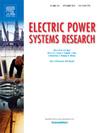Volt/VAR optimization for photovoltaic-storage-charging station high-permeability power distribution networks: A data-knowledge hybrid driven reinforcement learning method
IF 3.3
3区 工程技术
Q2 ENGINEERING, ELECTRICAL & ELECTRONIC
引用次数: 0
Abstract
The integration of a high proportion of electric vehicles and photovoltaic systems has increased the uncertainty of power flow state transitions in power distribution networks (PDN). To address the intermittency of power and the complexity of operational constraints caused by the integration of photovoltaic-storage-charging station systems into the PDN, this paper proposes a Volt/VAR optimization (VVO) framework driven by a data-knowledge hybrid approach. In this framework, a novel DistFlow-based soft actor-critic (DFSAC) algorithm is first introduced, which constructs an expert knowledge safety layer based on the DistFlow equations to describe the coupling relationship between the reinforcement learning actions and PDN voltage, ensuring the safety of the VVO strategy. A novel data augmentation technique and a linearized power flow calculation method are then proposed, enhancing the diversity and completeness of the state-action pairs for the reinforcement learning agent and increasing the speed of interaction with the environment. Finally, numerical experiments using real PDN operational data and the IEEE 34-bus system are conducted. The results show that the proposed method outperforms other state-of-the-art VVO methods, demonstrating better performance and good robustness under extreme source-load power conditions. The DistFlow linearization safety layer also shows good scalability in large-scale real power systems. Additionally, the proposed data augmentation method improves the DFSAC performance by approximately 75 % to 85 %, and the linearized power flow calculation method increases the overall training speed of the DFSAC agent by about 3 times.
求助全文
约1分钟内获得全文
求助全文
来源期刊

Electric Power Systems Research
工程技术-工程:电子与电气
CiteScore
7.50
自引率
17.90%
发文量
963
审稿时长
3.8 months
期刊介绍:
Electric Power Systems Research is an international medium for the publication of original papers concerned with the generation, transmission, distribution and utilization of electrical energy. The journal aims at presenting important results of work in this field, whether in the form of applied research, development of new procedures or components, orginal application of existing knowledge or new designapproaches. The scope of Electric Power Systems Research is broad, encompassing all aspects of electric power systems. The following list of topics is not intended to be exhaustive, but rather to indicate topics that fall within the journal purview.
• Generation techniques ranging from advances in conventional electromechanical methods, through nuclear power generation, to renewable energy generation.
• Transmission, spanning the broad area from UHV (ac and dc) to network operation and protection, line routing and design.
• Substation work: equipment design, protection and control systems.
• Distribution techniques, equipment development, and smart grids.
• The utilization area from energy efficiency to distributed load levelling techniques.
• Systems studies including control techniques, planning, optimization methods, stability, security assessment and insulation coordination.
 求助内容:
求助内容: 应助结果提醒方式:
应助结果提醒方式:


